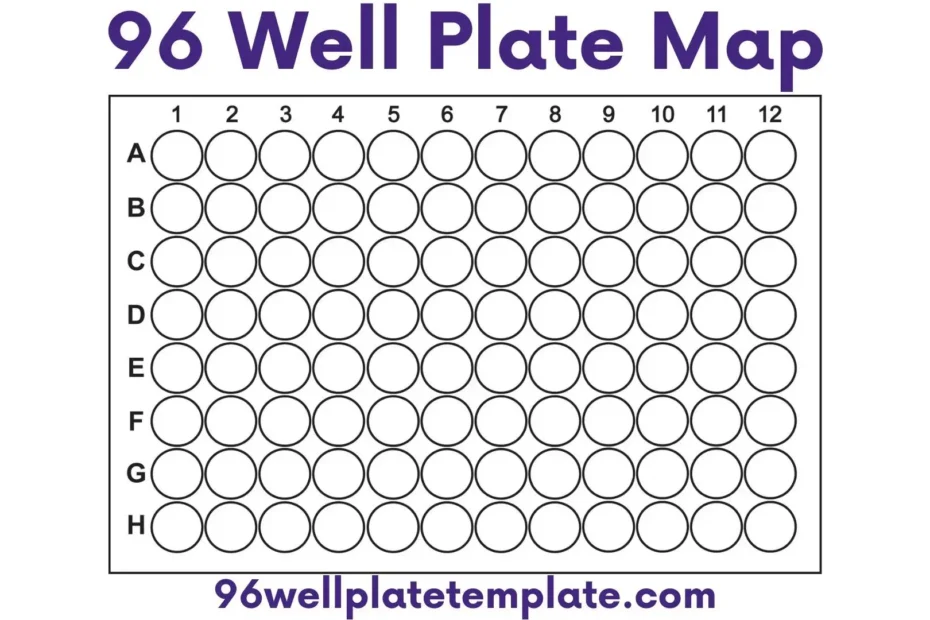Introduction to 96-Well Plate Technology
In the world of biotech research, precision and efficiency are paramount. Whether you’re a seasoned researcher, a lab technician, or a science enthusiast, understanding the intricacies of lab equipment is crucial. One such tool that has transformed the landscape of scientific inquiry is the 96 well plate. This seemingly simple device plays a pivotal role in various experiments and assays, offering a standard format for ensuring accuracy in high-throughput screenings. So Today we will see what 96 Well Plate Map actually is!
The purpose of this blog post is to explore the multifaceted applications of the 96 Well Plate Map, a staple in laboratories across the globe. By understanding its features and applications, you can harness its full potential in your research. Expect to gain insights into its evolution, practical tips for usage, and the personal experiences of lab experts who vouch for its indispensable role in scientific advancement.
The History and Evolution of 96 Well Plates
The origin of the 96-well plate marks a significant milestone in laboratory innovation. Invented in the 1950s, these plates provided a solution to the burgeoning need for efficient sample handling in research. The standardization of this format allowed for easier comparison and replication of experiments, driving consistency across laboratories worldwide.
Early Development and Material Advancements
Initially crafted from glass, early versions of the 96-well plate were bulky and fragile. However, advancements in material science led to the adoption of durable plastics, making them more accessible and user-friendly. These changes catalyzed widespread adoption in various fields, from pharmaceutical research to environmental testing. Over time, developers have refined the design, optimizing well shape and depth to accommodate a broader range of assays.
Modern-Day Applications
Today, the 96-well plate is not just a vessel for samples; it’s a testament to the progress of scientific inquiry. Its evolution reflects the dynamic nature of research needs, continually adapting to serve new purposes as technology advances. Biotech researchers now rely on these plates for applications ranging from simple sample storage to complex biochemical assays.
The Benefits and Versatility of 96-Well Plates in Biotech Research
The 96-well plate’s versatility is perhaps its most celebrated feature. In biotech research, where precision is key, these plates offer a standardized approach to conducting experiments. Their uniform design ensures that every well is identical, minimizing variables and enhancing the reliability of results.
High-Throughput Screening
One of the primary benefits is their suitability for high-throughput screening. By allowing multiple samples to be tested simultaneously, researchers save both time and resources. This efficiency is vital in drug development, where speed can significantly impact the pipeline from discovery to market.
Compatibility with Various Assays
In addition to their use in screening, 96-well plates are invaluable in various assay types, such as ELISA tests, cell culture work, and DNA sequencing. Their design makes them compatible with automated systems, facilitating large-scale studies that would be impractical with manual methods. Furthermore, the adaptability of well plates to different volumes and concentrations allows scientists to tailor experiments to specific research goals.
Understanding the 96 Well Plate Map: A Comprehensive Guide
To fully leverage the potential of 96-well plates, understanding their layout is essential. The 96-well plate map is a grid comprising 8 rows and 12 columns, each intersection representing a distinct well. This arrangement is not arbitrary; it facilitates systematic sample tracking, particularly in complex experiments.
Alphanumeric Coding System
Each well is identified using an alphanumeric code, combining a letter for the row and a number for the column. For example, the top-left well is labeled A1, while the bottom-right is H12. This coding system streamlines data entry and retrieval, reducing the likelihood of errors during experiments.
Importance of Mapping in Assay Design
Mapping is critical in designing assays that require precise controls and replicates. By allocating specific wells for positive and negative controls, researchers can ensure the validity of their results. Additionally, mapping facilitates statistical analyses, allowing for clear differentiation between experimental conditions and control groups.
Practical Tips for Using 96-Well Plates in the Laboratory
Maximizing the functionality of a 96 well plate requires more than just knowledge of its layout. Here are some practical tips for efficient usage in the laboratory:
Proper Handling
Always handle plates with care to prevent contamination. Use appropriate lids or covers when transporting or storing samples.
Optimizing Pipetting Technique
Consistent pipetting ensures uniform sample distribution across wells. Invest in high-quality, calibrated pipettes to maintain accuracy.
Implementing Labeling Systems
Develop a labeling system that complements the alphanumeric coding to keep track of different samples and conditions easily.
Taking these steps can significantly enhance the reliability of your experiments. Remember, even minor discrepancies in sample handling or pipetting can skew results, making attention to detail crucial.
Lab Expert’s Verdict: The Impact and Importance of 96 Well Plate in Advancing Biotech Research
To truly understand the impact of 96-well plates, we turned to lab experts who work with these tools daily. Their experiences underscore the importance of this technology in advancing research.
Expert Opinions and Testimonials
Dr. Emily Harris, a biotech researcher, emphasizes the role of 96 well plates in improving experiment throughput. “In my work, the ability to run hundreds of samples simultaneously is invaluable. It accelerates our research process and opens up new avenues for discovery,” she notes.
Similarly, laboratory technician Mark Patel highlights the simplicity and effectiveness of these plates in routine lab work. “Whether it’s a simple biochemical assay or a complex genetic screen, 96 Well Plate Map offer the consistency we need. It’s hard to imagine our lab functioning without them,” he shares.
These testimonials affirm the critical role 96-well plates play in modern research. By enabling efficient data collection and analysis, they drive progress across diverse scientific fields.

